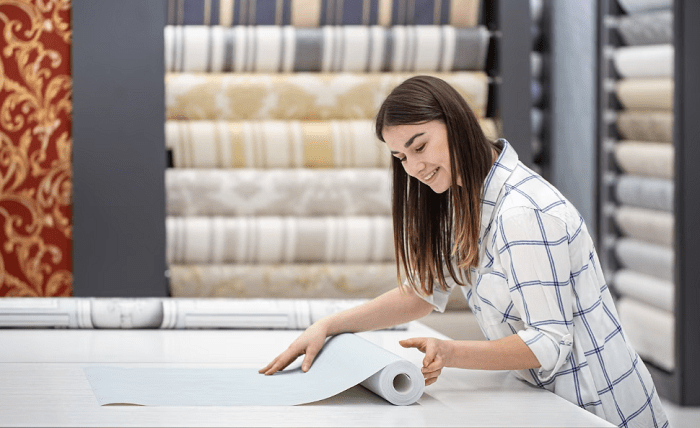Welcome to our blog, where we delve into the fascinating world of fabric technology! Today, we’re shining a light on an essential aspect of textile durability and color vibrancy: light fastness testing. Have you ever wondered how fabrics maintain their original hues and stay looking fresh even after prolonged exposure to sunlight? Well, wonder no more! In this article, we’ll explore what light fastness testing is all about and how it ensures longevity and color retention in fabrics. So grab your favorite cup of tea or coffee, sit back, and let’s dive right in!
What is light fastness testing?
What exactly is light fastness testing? Simply put, it is a method used to measure the ability of a fabric or dye to withstand fading or color change when exposed to light. Fabrics are often subjected to various environmental factors, with sunlight being one of the most significant contributors to color degradation.
During light fastness testing, fabric samples are exposed to controlled levels of artificial or natural light over a set period. This exposure helps simulate real-world conditions and assesses how well the fabric holds up against fading. Test results provide valuable insights into the fabric’s resilience and help manufacturers make informed decisions about its suitability for specific applications.
Light fastness testing can be conducted using different techniques such as xenon arc lamps, carbon arc lamps, or fluorescent UV lamps. These methods mimic varying degrees of UV radiation and intensity found in sunlight. By subjecting fabrics to these simulated conditions, scientists can evaluate how well they resist color loss and ensure longevity.
The test duration depends on various factors like intended use and expected lifespan of the fabric. For instance, outdoor textiles may undergo more rigorous testing due to their increased exposure risk compared to indoor fabrics that are shielded from direct sunlight.
Light fastness testing plays a crucial role in determining how long fabrics will retain their original colors under normal wear and tear conditions. It allows manufacturers and consumers alike to select materials that will maintain their vibrancy even after extended periods of usage – ensuring durability without compromising aesthetic appeal.
How is light fastness testing performed?
Light fastness testing is a crucial process that ensures the longevity and color retention of fabrics. But how exactly is this testing performed? Let’s delve into the details.
It’s important to understand that light fastness testing involves subjecting fabric samples to controlled exposure to various light sources. This helps simulate real-life conditions and assess their resistance to fading or discoloration caused by sunlight or artificial lighting.
One common method used in light fastness testing is the Xenon Arc Lamp test. In this method, fabric samples are exposed to intense levels of UV radiation emitted by a xenon arc lamp. The exposure time can vary depending on the desired test duration, but typically ranges from several hours up to hundreds of hours.
Another widely used technique is the Fade-Ometer test, which utilizes multiple fluorescent UV lamps as the light source. Fabric specimens are placed in rotating frames and subjected to repeated cycles of simulated daylight and moisture condensation.
Throughout these tests, various measurements such as color change, strength loss, or even microscopic analysis may be conducted at regular intervals.
By performing rigorous light fastness testing methods like these, manufacturers can ensure that their fabrics will withstand prolonged exposure without significant fading or deterioration over time.
Understanding how light fastness testing is performed gives us valuable insights into how manufacturers evaluate fabric durability and color retention properties under different lighting conditions. By subjecting fabrics to controlled exposure using techniques like Xenon Arc Lamp tests or Fade-Ometer tests, they can confidently produce long-lasting textiles that maintain their vibrant colors for years to come
How does light fastness testing ensure longevity and color retention in fabrics?
Light fastness testing plays a crucial role in ensuring the longevity and color retention of fabrics. By subjecting textiles to controlled exposure to light, manufacturers can assess how well they will withstand fading and deterioration over time.
During light fastness testing, a variety of factors are taken into consideration. These include the type of fabric, dye or pigment used, and the specific conditions under which it will be exposed to light. The fabrics are typically exposed to different intensities and wavelengths of light for extended periods.
The benefits of this testing process are significant. First and foremost, it allows manufacturers to determine whether a fabric’s color will remain vibrant even after prolonged exposure to sunlight or artificial lighting sources. This is especially important for products such as upholstery fabrics or outdoor textiles that need to maintain their visual appeal over time.
Additionally, light fastness testing helps identify any potential weaknesses in the fabric’s structure that may lead to premature degradation. By assessing how well a textile retains its strength and integrity when subjected to intense light, manufacturers can ensure that their products have long-lasting durability.
Through rigorous light fastness testing protocols, manufacturers can confidently provide consumers with high-quality fabrics that not only retain their original colors but also stand up against everyday wear and tear caused by exposure to various lighting conditions.
Conclusion
Light fastness testing plays a crucial role in ensuring the longevity and color retention of fabrics. By subjecting materials to controlled exposure to light, manufacturers can accurately assess how well they will withstand the damaging effects of sunlight over time.
Through meticulous testing procedures, such as xenon arc or fluorescent UV exposure, researchers can simulate years of sunlight exposure in a matter of weeks or months. This allows them to identify any potential issues with fading or degradation before the fabric even reaches consumers.
The benefits of light fastness testing are numerous. Not only does it help manufacturers produce higher quality products that retain their vibrant colors for longer periods, but it also enables them to meet customer expectations for durability and performance. Additionally, by understanding how different materials respond to light exposure, companies can make informed decisions about which dyes or finishes to use in their production processes.
By using this valuable information gained through light fastness testing, businesses can ensure that their fabrics maintain their visual appeal and structural integrity throughout their lifespan. Customers can feel confident that the garments and textiles they purchase will continue looking fresh and vibrant even after countless washes and hours spent under the sun.
So next time you’re shopping for clothing or home decor items made from fabric, take a moment to appreciate the behind-the-scenes work done through light fastness testing. It’s thanks to these rigorous evaluations that we can enjoy beautiful colors that stand the test of time!



